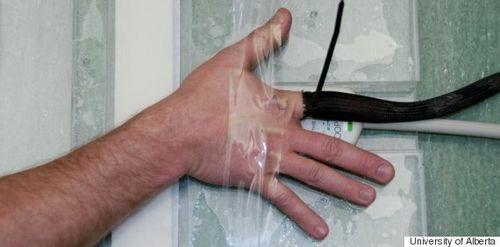The world of science has long been baffled over what actually happens when you crack your knuckles.
Now, after years of debate, researchers have discovered that the unpleasant sound is caused by a tiny cavity that forms between the muscle joints that are pulled apart.
This then fills with gas and collapses, creating a popping noise.
They also discovered that the reason you can't "re-crack" your knuckles straight away is because the gas has to then re-dissolve in the synovial fluid in the joints.


"The ability to crack your knuckles could be related to joint health," said Professor Greg Kawchuk from the University of Alberta in Canada.
“Some people can crack their joints and others cannot and we'd like to know why."
The piece of research, which has been jovially named the "pull my finger study", used MRI to video-record knuckles cracking.
They discovered that knuckle-cracking happens in less than 310 milliseconds.
"It's a little bit like forming a vacuum," said Professor Kawchuk. "As the joint surfaces suddenly separate, there is no more fluid available to fill the increasing joint volume, so a cavity is created and that event is what's associated with the sound."
SEE ALSO:
What Happens When You Crack Your Knuckles?
The Painful Frustration of Arthritis
Yoga For Arthritis: Regular Practice Can Reduce Pain, Stiffness And Feelings Of Depression
The video also showed an unexpected white flash between the cracking knuckle joints, which researchers believe could be water being drawn to the joint - something which could have a beneficial effect.
Despite scientists previously warning that knuckle-cracking could damage your bones, Kawchuk suggests that it doesn't appear to cause any long-term harm.
He added: "Why do the same joints crack in some people and not others? Although speculative, we wonder if being able to crack ones joints is a sign that the joint is actually healthy.
"It may be that we can use this new discovery to see when joint problems begin long before symptoms start, which would give patients and clinicians the possibility of addressing joint problems before they begin."
The study was published in the scientific journal PLOS ONE.